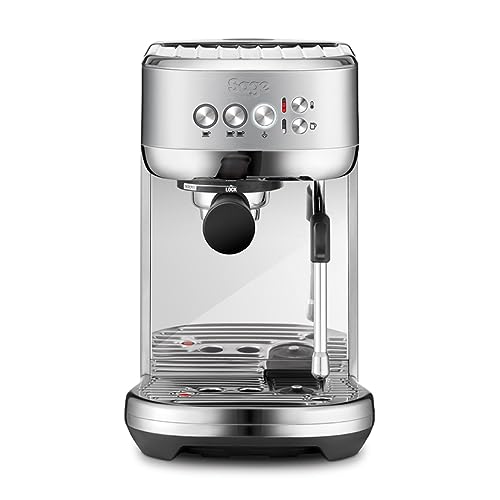Coffee and Espresso Machines
Espresso machines use pressure to force water through finely ground and tamped coffee beans. They make a rich and delicious cup of coffee.
Good Housekeeping Institute experts recommend models that are brewed at 9 bars minimum to ensure an ideal extraction. Beware of manufacturers that boast more pressure than is needed.
Types
The espresso maker (also called a coffee maker and Espresso maker) brews coffee that is more concentrated, of higher quality, than your typical café drinks. discount espresso machines utilizes an average of nine bars of pressure. These machines usually have various features, including temperature control and brew strength, programmable brewing, and different sizes of drinks. Some machines may have steam wands with either manual or automatic settings for creating texturized milk to create artwork with latte. There are three types of latte art: semi-automatics, super-automatics and automatic. Each model has its own degree of control and automation.
The most well-known espresso machine model for specialty coffee shops is semi-automatic models. This gives baristas full control over the brewing process, but it is not as user-friendly as a fully automatic machine. You still need to grind beans, fill and tamp the portafilter and adjust the extraction time for the best quality espresso shot.
Automatic machines come with built-in mills that measure and measure your grounds and. They automatically disperse enough water to extract espresso, and are often equipped with the capacity to programate the size of the beverage. They were the most common espresso machine types in our lab tests, and they offer a good balance of consistency and human control.
Functions
If you opt for an engine driven machine or a steam-driven model, you'll get a reservoir that stores the water that is used to make your coffee. There's also a heating element that heats the cold water in order to create the intense pressure needed to extract coffee from ground.
When the brew lever gets raised it triggers the water inlet cam that seals the valve for pre-infusion, so only hot water that is pressurized to a high pressure flows through the portafilter to ground coffee. It takes about 25 seconds for the water to be brewed into espresso.
The hot-water tubing, referred to as the insulated tube extends from the reservoir to the spout on the top of your machine. The heating element for resistance will heat the water as water moves through the aluminum tube and warming plate.
After the spout has turned on and your cup is placed under the spout in order that espresso flows into the cup through the portafilter. The coffee maker is also likely to have a steam wand, which you can use to heat and froth milk for drinks that are espresso-based, such as cappuccino or latte.

Automatic machines eliminate the guesswork from the brewing process. They are simple to operate, programmable and can measure and grind beans as well as the tamping down process. They typically be the most efficient overall in our Lab tests since they are simple to operate and don't require much user skill.
Materials
Inside an espresso machine you'll find a plethora of copper tubes and stainless steel boilers. There's also an intelligent software. Although they might appear to be complicated but their primary function is to convert hot water into finely ground coffee.
When buying an espresso maker it is important to consider the dimensions and space requirements as along with drink options, energy-saving options, and brewing precision. Look for a steam button to activate the steam wand. It is used to create the latte art and frothing the milk. The front of the machine has the pressure gauge which will tell you the operating pressure of the boiler and pump. Find a coffee maker that has two needles, so that you are able to see both the minimum and maximum pressure.
If you want to create more than espresso, pick a machine that offers different sizes of brew, including ristretto. You can also find models with an adjustable milk hopper to allow hands-free, hassle-free frothing and the ability to quickly switch between different types of milk. Select a model with a built-in softener if you have hard water to prevent the accumulation of minerals and ensure fresh espresso.
Some manufacturers use PID (proportional, integral, digital) thermostat to keep a specific temperature range for espresso brewing. This feature ensures the same high-quality, consistent cup of espresso each time. It also saves on expenses for energy since the machine only runs when it's necessary.
Maintenance
As espresso and coffee machines become more accessible to home use, the regular maintenance of the equipment becomes even more crucial. Having the best equipment can make a world of difference in your cup of coffee, however that's only true if your machine is operating properly.
Regular cleaning and maintenance should include everything from cleaning the group head, steam wand and water filter, as well as descaling and changing the water filters frequently. If you're making between two and five coffees each day, it is recommended to clean the machine's main parts every week. Certain parts of the machine may need to cleaned every two to three weeks, for instance, the water tank and grinder.
You should also backflush your machine every week. This involves placing the portafilter in its place and running the brew cycles many times. This will help remove any coffee grounds or oils that are left behind. You can also clean the portafilter by using brushes and cleaners specifically designed for espresso machines.
Maintaining your coffee and espresso machine in a proper manner can ensure that it lasts longer. It is important to take care of the expensive espresso machine.
